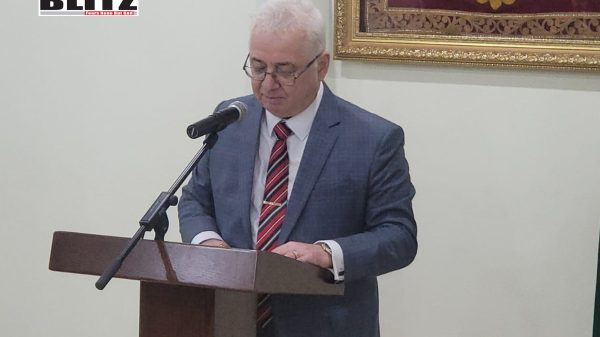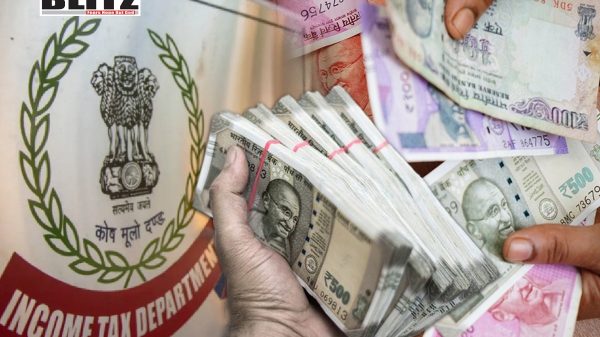Bangladesh’s FOREX remittance continues to decline
- Update Time : Monday, January 22, 2024

The FOREX remittance in Bangladesh has been a crucial pillar of the economy, acting as a lifeline for millions of families dependent on financial support from expatriates working abroad. In recent years, the landscape of remittance has undergone a significant transformation, with a growing number of expatriates opting for formal remittance channels. Despite this positive trend, there has been a perplexing decline of approximately 2.87% in overall remittance inflows during the period from July to December 2023. This unexpected dip, amid a surge in the use of formal channels, raises pertinent questions about the underlying factors influencing the remittance sector’s health.
The latest survey from the Bangladesh Bureau of Statistics (BBS) provides valuable insights into the evolving preferences of expatriates when it comes to remitting funds. Notably, an overwhelming 93.6% of remittances are currently channeled through formal means, showcasing a remarkable increase from the 76.08% recorded in 2013. The survey, titled “Household Income and Expenditure Survey (HIES) 2022,” sheds light on the diverse channels employed by expatriates for remittance, with banks leading at 77.96%, followed by mobile banking (14.14%), hundi (4.21%), friends (1.58%), Western Union (1.31%), MoneyGram (0.24%), and other methods (4.21%).
This shift towards formal channels signifies the success of government initiatives aimed at promoting financial transparency and encouraging expatriates to use official channels for remittance. However, the intriguing part lies in the contradiction between the increasing adoption of formal channels and the decline in total remittance inflows.
The economic impact of remittances on Bangladesh cannot be overstated. In the fiscal year 2021, the country experienced a record high of $24.77 billion in remittances. However, subsequent fiscal years witnessed a dip, with the figure standing at $21.03 billion in fiscal year 2022 and $21.61 billion in fiscal year 2023, according to data from the Bangladesh Bank. The remittance receipts for the July-December period of the current fiscal year stood at $10.80 billion.
Despite over three million migrant workers leaving Bangladesh in the last three years, the impact on remittance flow has been surprisingly minimal. The contradiction between the increasing use of formal channels and the decline in overall remittance inflows prompts a closer examination of the factors influencing this paradox.
Analysts and experts speculate that various factors may be contributing to the decline in overall remittance inflows despite the increasing use of formal channels. These factors include currency exchange rates, economic conditions in destination countries, and regulatory challenges that impact the total remittance amounts.
Dr. Zahid Hussain, a former lead economist at the World Bank’s Dhaka office, has expressed concerns about the weakened state of formal channels for remittance flows. Despite a substantial monthly outflow of approximately 100,000 workers from Bangladesh, the anticipated increase in remittance flows through formal channels has not materialized. One significant factor highlighted by Dr. Hussain is the notable difference in exchange rates between formal and informal channels, with expatriates reportedly receiving Tk8-10 more per dollar through informal means.
The decline in formal remittance flows can be attributed to a complex interplay of factors. Increased demand for dollars in informal channels, a surge in money laundering activities, and the impact of a fixed currency exchange rate introduced in September of the previous year are among the observed challenges. Dr. Hussain noted that since the fixed currency exchange rate was implemented, remittance inflows have been on a declining trajectory.
One major factor contributing to the decline in formal remittance flows is the increased demand for dollars in informal channels. Expatriates, driven by the allure of higher rates, are turning to informal channels where the exchange rates are more favorable compared to the formal rates offered by banks.
Additionally, a rise in money laundering activities has further complicated the remittance landscape. The anonymity and flexibility associated with informal channels make them susceptible to illicit financial activities, impacting the overall integrity of the remittance sector.
The impact of a fixed currency exchange rate, introduced in September of the previous year, is another factor influencing the decline. While fixed rates aim to provide stability, they may not always align with market forces, leading to a situation where informal channels become more attractive for expatriates seeking better returns on their remittances.
Addressing the challenges confronting the remittance sector requires a concerted effort from policymakers, financial institutions, and experts. Dr. Zahid Hussain emphasizes the necessity for collaboration to identify and address the root causes affecting the remittance sector. This collaborative approach is imperative to safeguarding the stability and sustained growth of Bangladesh’s remittance inflows.
Policymakers need to reassess and fine-tune existing regulations to strike a balance between stability and flexibility. Adjustments in currency exchange policies and a comprehensive review of the regulatory framework can potentially mitigate the challenges posed by the current fixed exchange rate.
Financial institutions play a pivotal role in restoring confidence in formal channels. Innovations in financial products, competitive exchange rates, and enhanced customer service can incentivize expatriates to choose formal channels over informal ones.
Experts from academia and the private sector can contribute valuable insights into the evolving dynamics of remittance. Research initiatives focused on understanding expatriate behaviors, market trends, and global economic conditions can provide a solid foundation for evidence-based policymaking.
The paradoxical situation of increasing formalization and declining remittance flows in Bangladesh presents a nuanced challenge for stakeholders. While the government’s efforts to promote formal channels have yielded positive results, the sector grapples with multifaceted issues such as exchange rate differentials, economic conditions abroad, and regulatory challenges.
A comprehensive and collaborative approach is imperative to navigate these headwinds and ensure the long-term health and vitality of Bangladesh’s remittance sector. By addressing the root causes, fostering collaboration among stakeholders, and adapting policies to changing market dynamics, Bangladesh can fortify its remittance sector and continue to provide vital support to the families that rely on these financial inflows. As the nation stands at the crossroads, strategic and collective efforts will be instrumental in steering the remittance sector towards sustained growth and resilience.


















